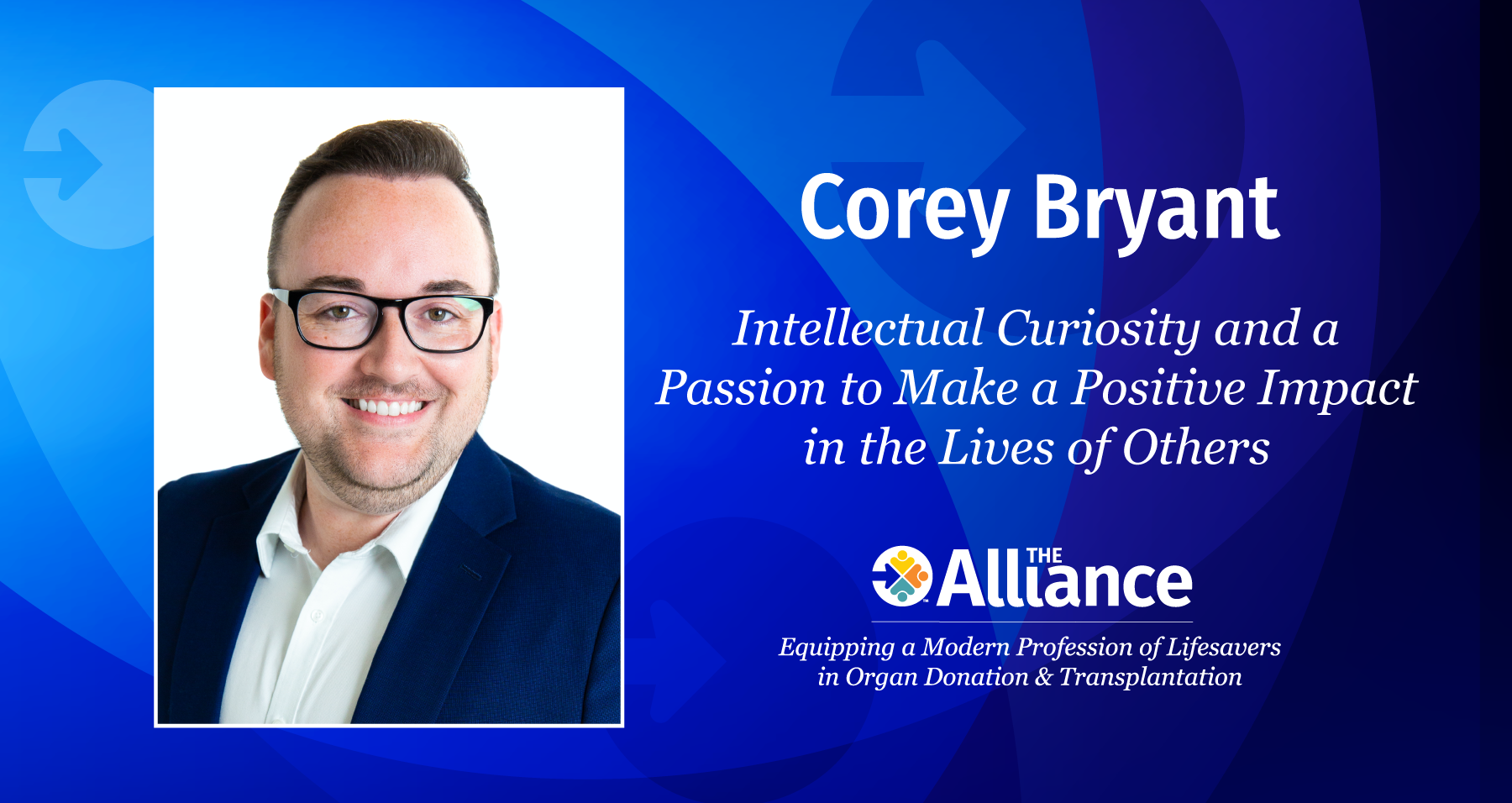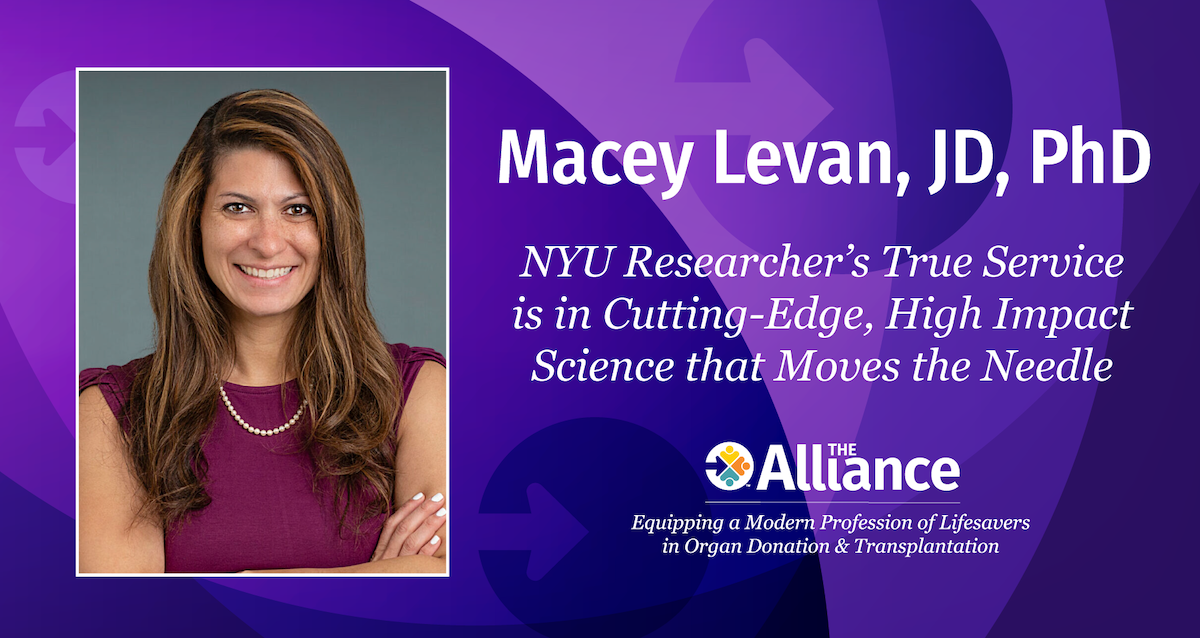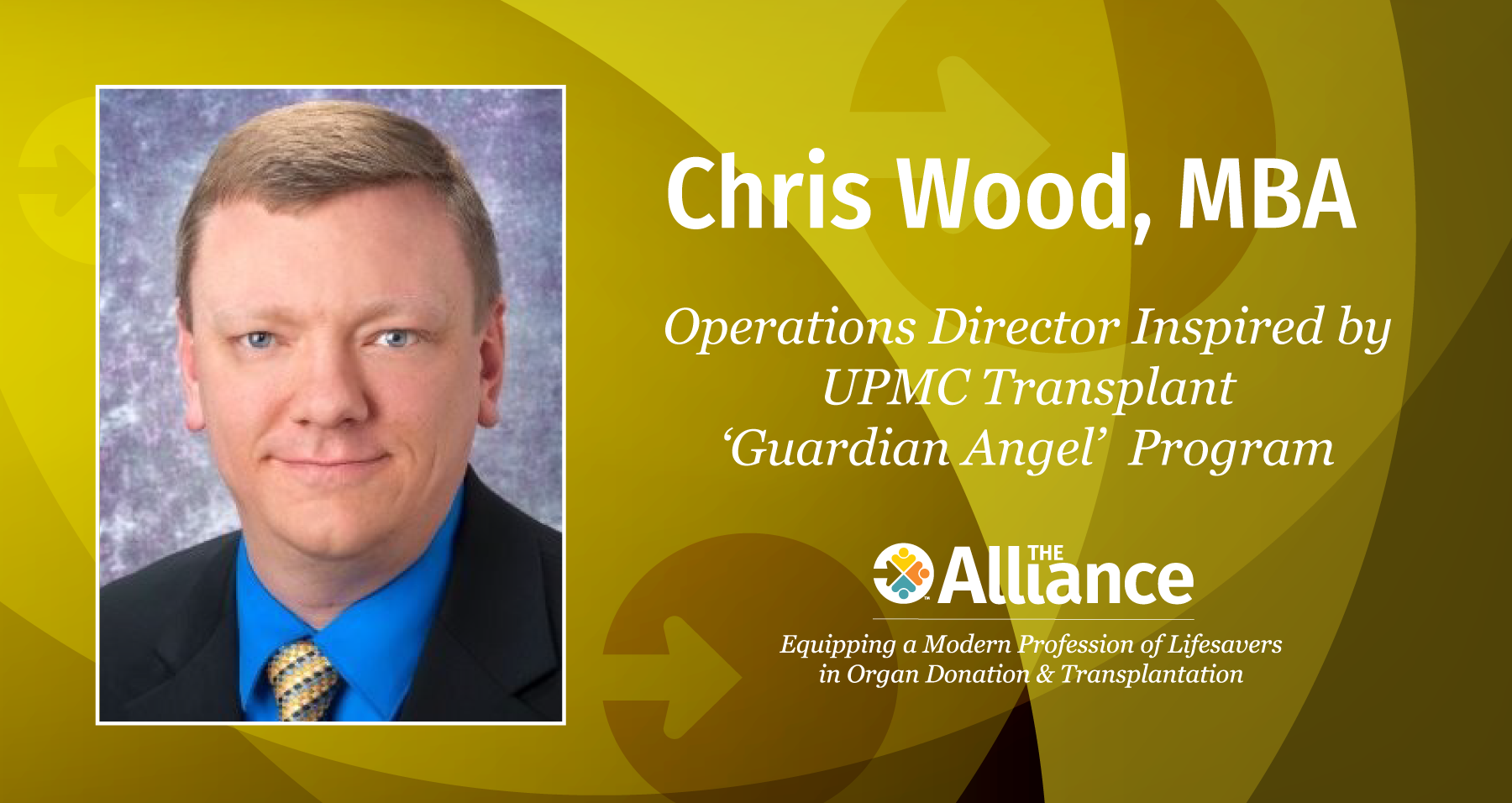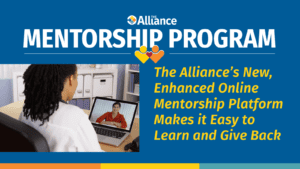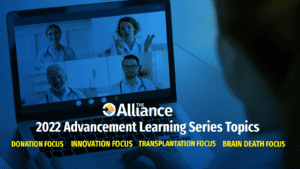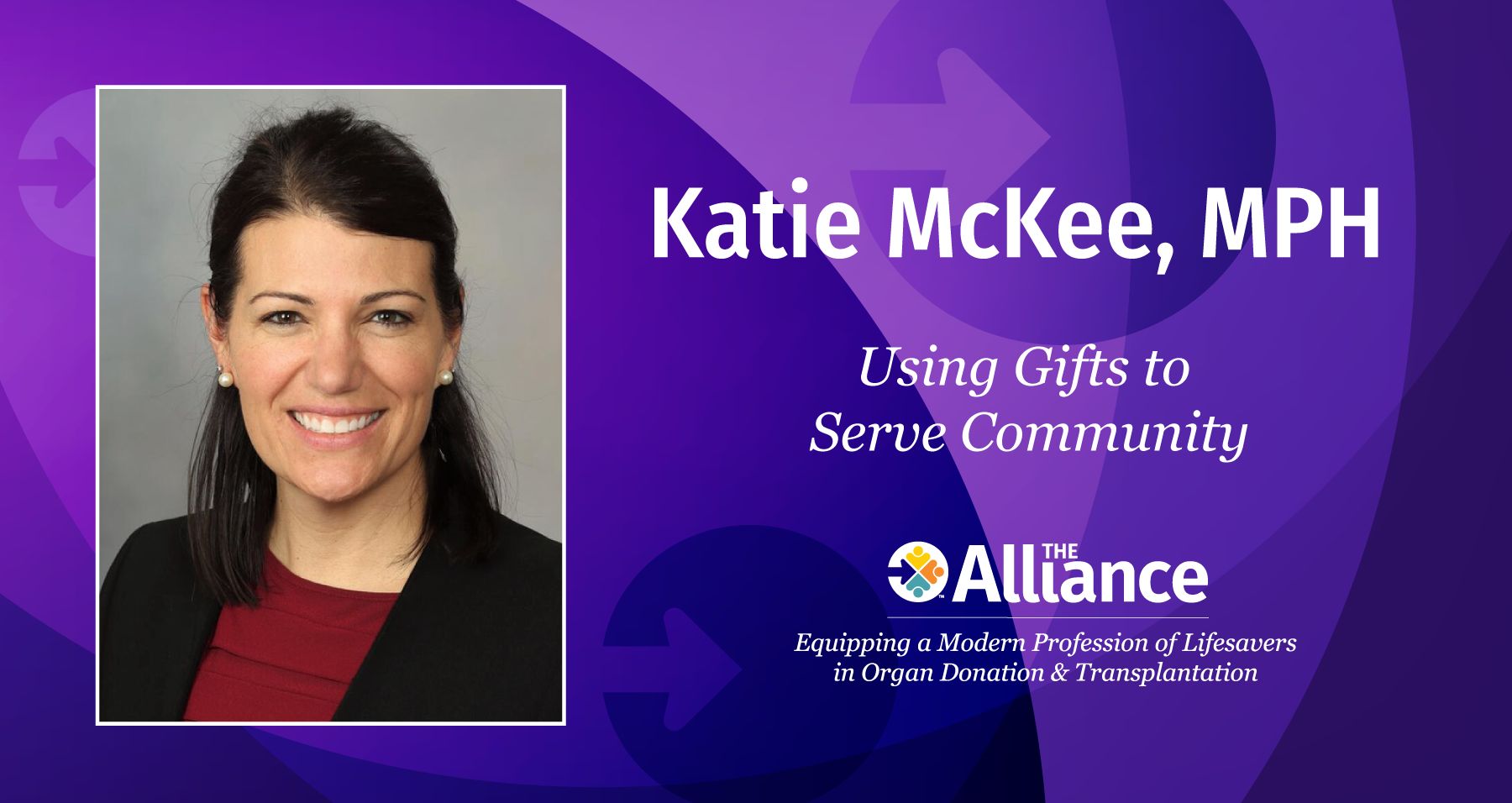The interactive webinar was presented by The Alliance and UNOS on November 4, 2021.
Top organ donation and transplantation professionals shared innovative staffing and retention strategies being used by their organizations to respond to labor shortages during an interactive panel presentation hosted by The Alliance and The United Network for Organ Sharing (UNOS) on November 4. The panelists also responded to ideas that emerged from small breakout discussion sessions, in which participants identified the positive aspects that came as a result of the challenges created by the pandemic, as well as the innovative approaches their organizations are using to address labor shortages. Promoting active recovery to prevent burnout and leveraging technology to analyze data to inform staffing decisions were also discussed.
The highly interactive session, “Staffing Challenges in Donation and Transplantation: Exploring New Organizational Structures, Recruitment, and Retention Methods” was presented in a partnership between The Alliance and UNOS, and garnered very strong interest as more than 540 professionals registered for the live webinar. A recording of the session is available in The Alliance On-Demand Advancement Series library or on UNOS Connect.
The online session was anything but passive as participants submitted questions via chat, provided real-time feedback using Mentimeter interactive presentation software, and interacted in small-group breakout discussions.
Tony Bridwell, senior vice president and chief people officer at Ryan, LLC, moderated the session and panelists were:
- Ian Jamieson, vice president of transplant services, Duke University Medical Center;
- Paul Myoung, senior administrative director, Massachusetts General Hospital;
- Samantha Reed, system administrator, Springfield Memorial Hospital;
- Diane Brockmeier, president & CEO, Mid-America Transplant;
- Becky McKay, director of human resources, LifeGift.
Bridwell, who leads Ryan’s global human resources, is a national thought leader in corporate culture, learning and development and human resources with more than 25 years of global leadership expertise inspiring, motivating and empowering employees to realize their highest potential.
“In dealing with these big issues of labor and talent, compensation tends to be where we normally go,” says Bridwell. “But we’re going to look at this bigger idea of total rewards, we’re going to talk about well-being and burn-out, and planning and technology.”
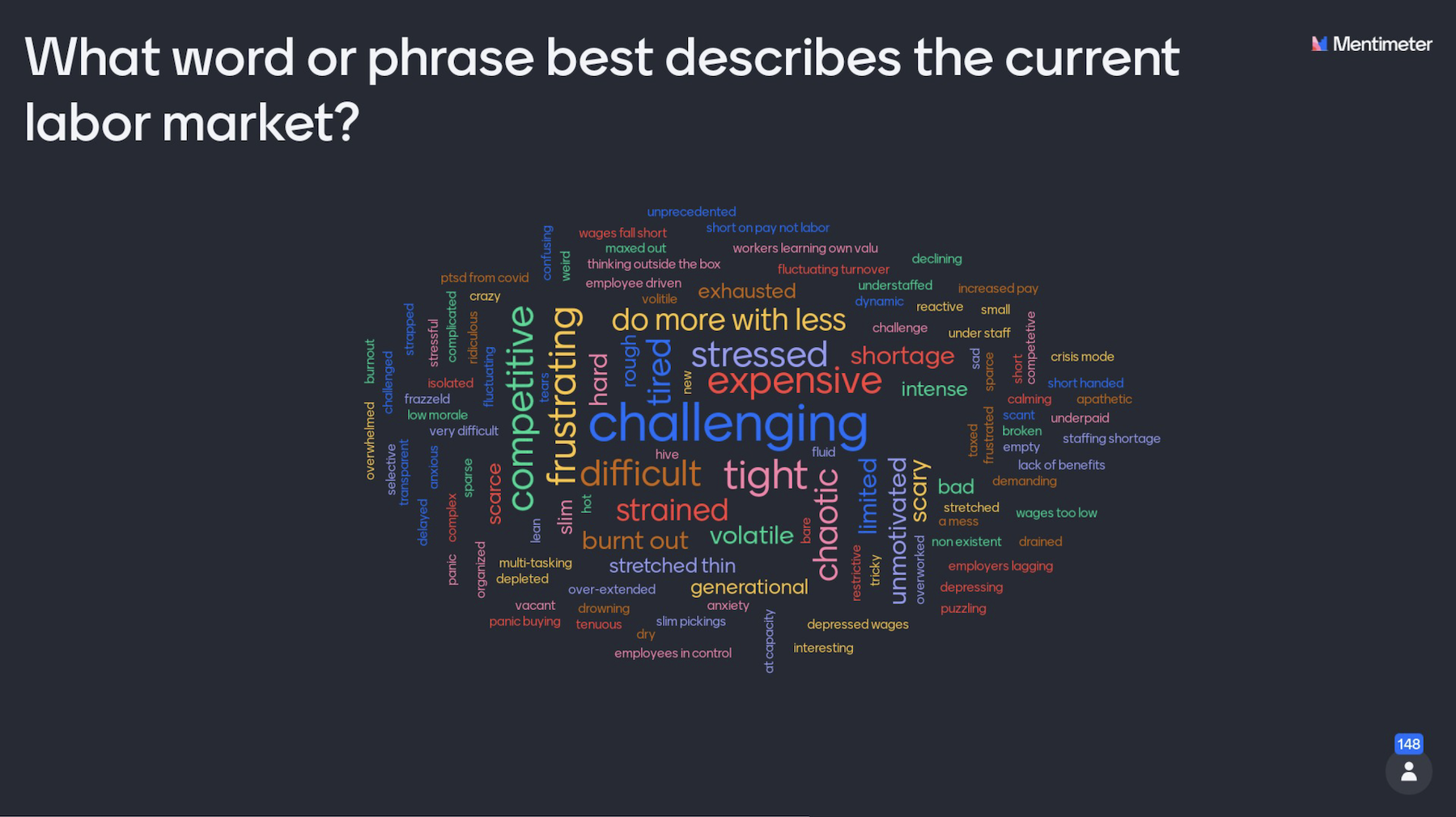
Importance of Culture and Examples of Innovative Strategies
Bridwell stressed the importance of applying an organizational cultural lens to labor shortage strategies and asking, “what is it in my culture that allows that to happen or what might need to shift in my culture for this wonderful idea to happen? Every organization has a culture, and culture is the way people think, feel and act.”
Ian Jamieson, vice president of transplant services at Duke University Medical Center, a large transplant center, said creating two ‘float coordinator’ positions has reduced staff turnover. “The one thing at Duke that has truly made a difference in staff morale, staff retention, and staff resiliency is the knowledge that we have folks up our sleeves who can be plugged in if there is turnover.” Jamieson noted that Duke’s clinical service unit culture made it possible to create the float coordinator positions because as a growth area it’s possible to fast-track justifications for innovative staffing models.
Diane Brockmeier, president & CEO Of Mid-America Transplant, an OPO in Missouri, said they put a strong emphasis on performance improvement to keep the organizational mission in the forefront of the team’s work. “All of us collect a ton of data and actually put it to work on the human element to try to ensure that not only do we support a performance improvement innovative culture, but that the people and their work is acknowledged within that as they try to deliver the mission on a daily basis.”
Samantha Reed, system administrator at Springfield Memorial Hospital in Illinois, which has a small transplant unit, said flexibility allows their team to deal with staffing challenges. “The advantage of having a smaller team is that if there is a single point of failure, we are able to make changes quickly.” Reed noted that building trust in organizational culture is key for this strategy to work. “It’s trusting your leaders, it’s trusting your staff, and it’s trusting the colleague working next to you, that if you drop the ball on something or you implement a process that’s not quite right, no one’s going to blame you for it. No one’s going to get mad at you for it. You’re all going to figure it out together, and that’s really hard to do.”
Paul Myoung, senior administrative director, Massachusetts General Hospital, said that effective communication has been key. “We really had to change and shift how we approach our culture and to do it more deliberately than passively instead of leaning on what has culturally worked in the past.”
Becky McKay, director of human resources at LifeGift, an organ procurement organization in Michigan, said a focus on the human care of their team supports retention. “We’re a very collaborative environment. We listen to our frontline staff as well as our leaders. Our leaders are actively involved and step up to support wherever needed and provide mental and emotional support in every way.”
Bridwell summed up the panelists’ remarks by noting the importance of attending to organizational culture and the importance of psychological safety. “There’s probably some work culturally that needs to happen behind the scenes for these strategies to stick and be fully successful. What people need to understand is that when there’s low psychological safety, but there’s still that high motivation and high accountability, that equals the anxiety zone, which is a gateway to burnout.”
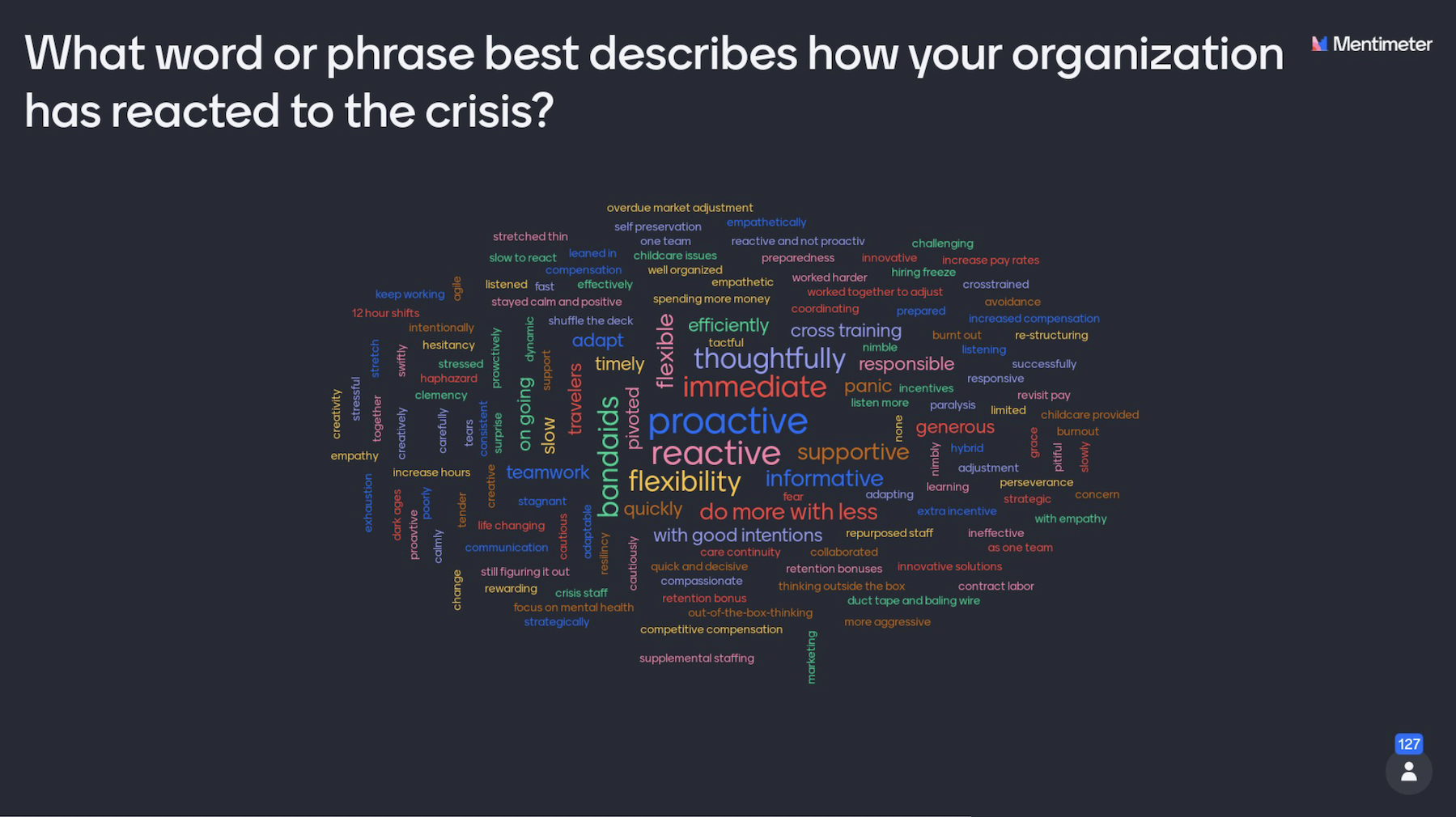
Active Recovery Can Prevent Fatigue from Becoming Burnout
Concerns about burnout emerged from attendees as a strong driver of recent team changes.
Bridwell continued, “Research shows that burnout actually happens with our highest engaged individuals. When you have a highly engaged organization and they’re dealing with real or perceived unmanageable stress, that’s where that burnout starts to kick in. It starts with exhaustion, goes to cynicism and then ultimately into inefficacy in their work. Burnout is when people who are highly engaged for a long period of time without the personal skills or organizational support to maintain their well-being. Our panelists have talked about developing people, failing quickly, having that psychological safety, putting the human side first, and managing the culture as ways of reducing staff burnout and improving employee retention.”
Following reports from breakout discussions about what aspect of COVID had been good for participant’s organizations, comments emerged such as enhanced communication, new roles, increased work from home flexibility, better use of technology, more interaction, and schedule flexibility. Bridwell emphasized it’s important to talk about the positive. “If the only stories people are hearing are the negative stories, then that starts to create a mindset that everything is broken, but I want you to look at all of the positive stories people are telling about the good things that have happened in their organizations. The question to be asking yourself is why aren’t we telling these stories inside our organization and inside our culture? The narrative or the stories that consume the airways consume the culture, so what story are you telling?”
He noted it important to look at the good. “If we don’t, human nature means we’re going to slide toward what seems to be out of our control and that becomes a gateway for people to ultimately slip into burnout.”
Panelist Paul Myoung noted it’s important to distinguish between fatigue and burnout. “If you’re truly burnt out, it’s a feeling of being stuck, right? It’s like not knowing what the next day is going to look like, not knowing whether or not your boss is going to help you out, not knowing if you have an FTE to open up, not knowing what’s going to happen and always feeling like you’re really stuck, that’s burning out.” He said using an analogy to an athlete is helpful and applying principles of active recovery can prevent burnout. “We all talk about athletes in terms of who’s injured versus who’s just tired. So, we need to be very clear on what stage are we at. Is it just bearing through the pain or really being hurt and playing through the injury?”
For someone who is fatigued, applying active recovery methods can prevent burnout. “It’s not just stopping the work; it’s looking at it from the standpoint of asking how can I be better myself?” says Myoung. “If I don’t take care of myself, I can’t take care of others. I can’t take care of my team. I can’t take care of my patients better.”
Bridwell emphasized the importance of active recovery. “There are three basic active recovery modes. There’s detachment, where I’m fully mentally letting go, There’s relaxation, which is something completely separate such as a relaxing activity. And then finally, there’s mastery, which means I lean into something I like, and I become really good at that, whether it’s biking or canoeing or hanging out with the team.”
Leveraging Technology to Analyze Data to Inform Staffing Levels
The panel concluded with a discussion of how organizations use technology to analyze data to inform labor and talent strategies. Panelists shared that dashboards analyzing work efforts have been created in partnership with transplant coordinators and clinicians and that the dashboards are then used to anticipate and facilitate growth and future capacity needs. It was also noted that OPOs frequently share data with smaller transplant centers.
Bridwell closed out the session by saying, “I want you to walk away from this webinar knowing that all of us are in this together, and should one of us stumble, the other is there to help pick us up, whether it’s internal or whether it’s external. This network of life-saving individuals is changing the world one person at a time and I’m proud to be a part of it.”





